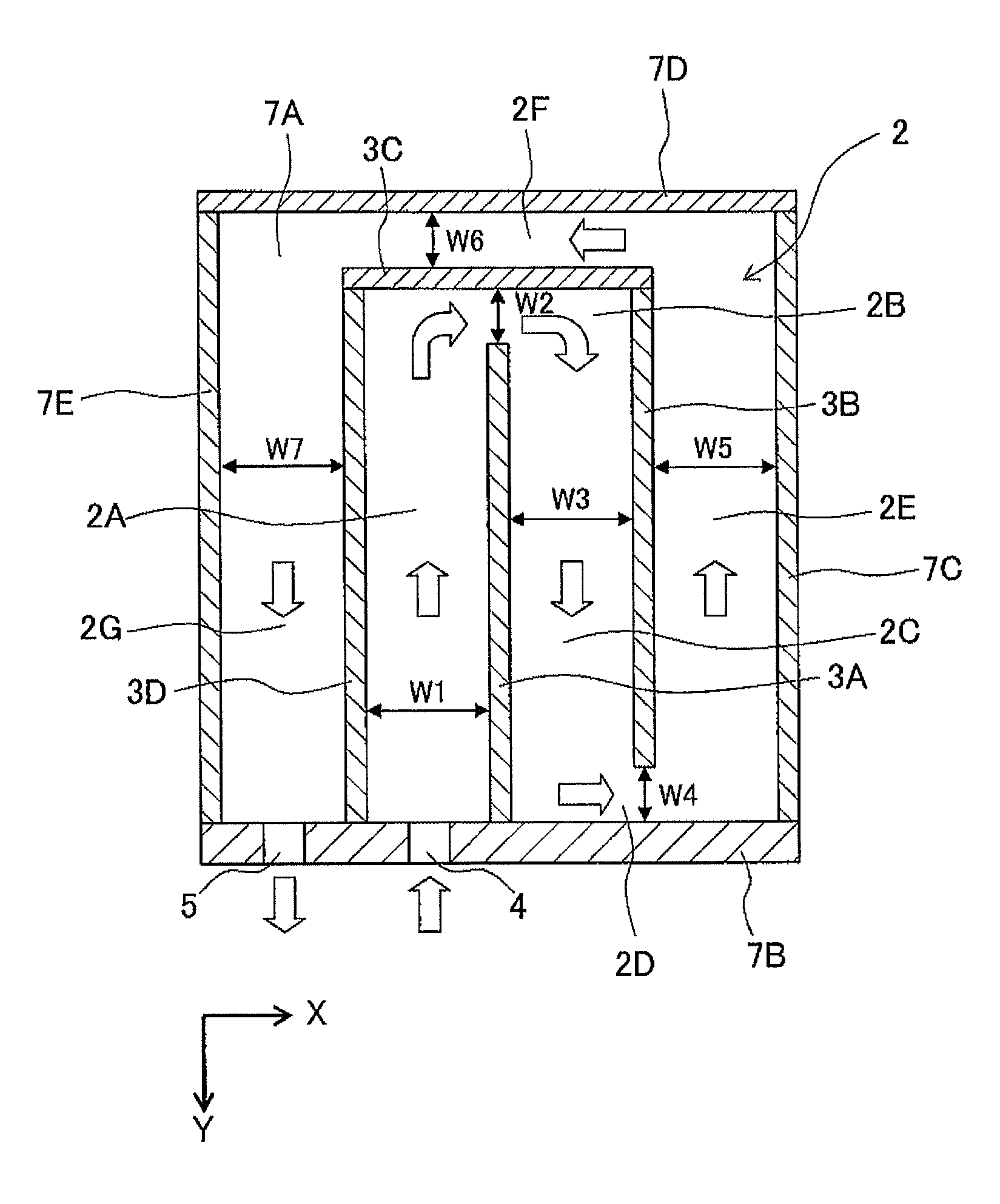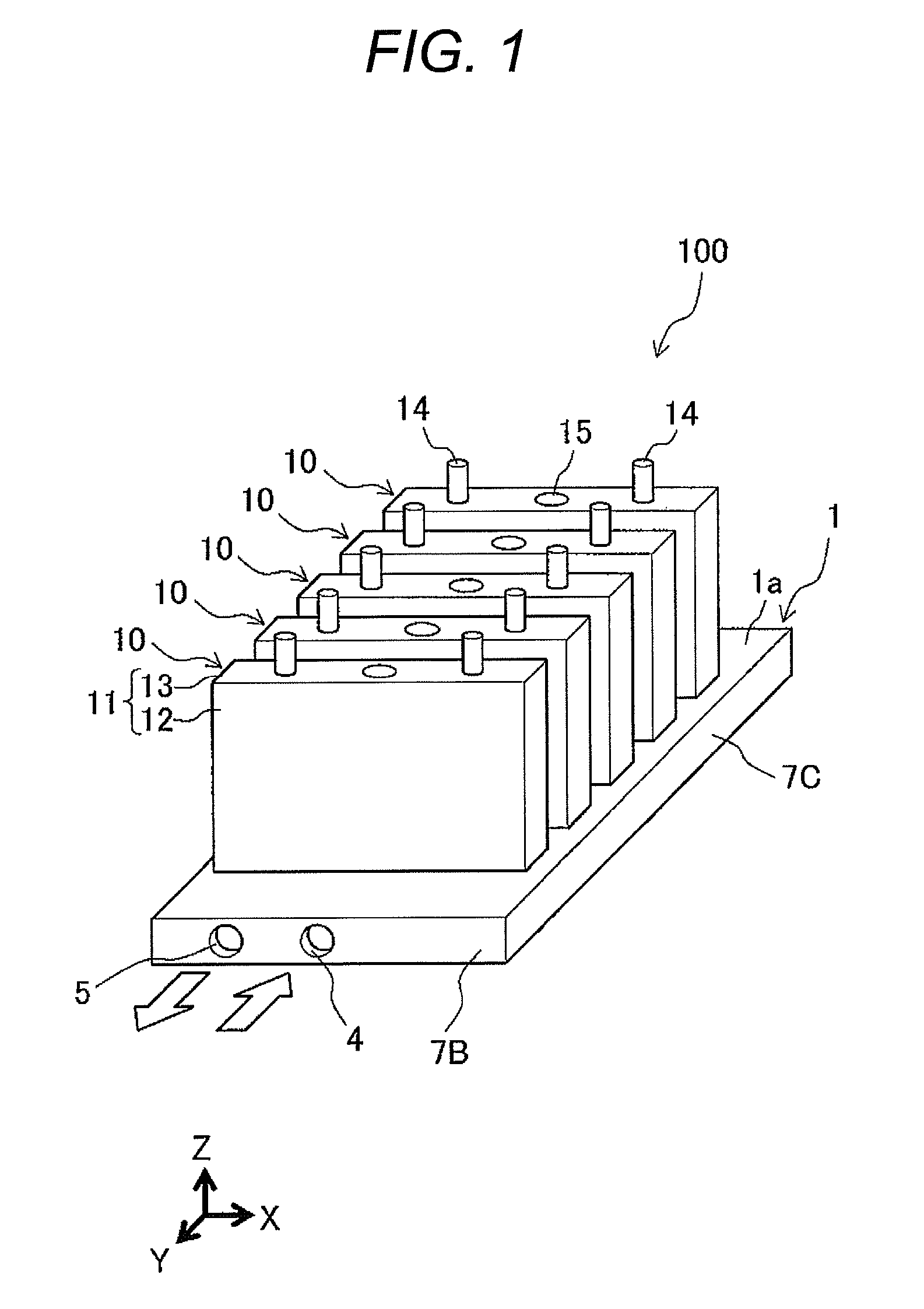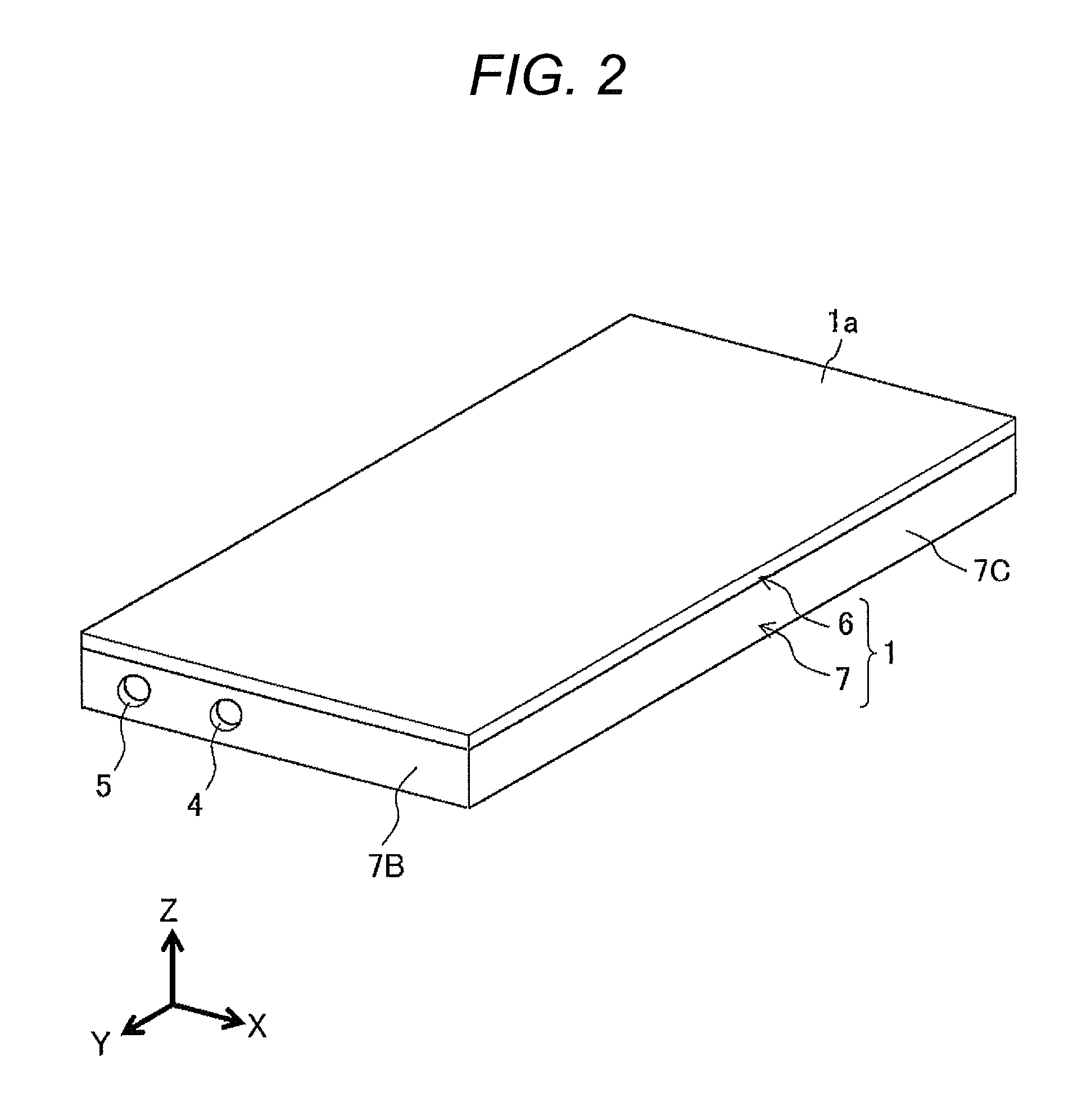Battery module
a battery module and battery technology, applied in the field of batteries, can solve the problems of large cell temperature rise, large cell heat value, etc., and achieve the effects of reducing cell life between cells, reducing the variation of recharging and discharging amounts, and reliable and compact structur
- Summary
- Abstract
- Description
- Claims
- Application Information
AI Technical Summary
Benefits of technology
Problems solved by technology
Method used
Image
Examples
example 1
[0038]FIG. 4 is a sectional view of a cooling plate according to Example 1, and is a convenient diagram showing a flow of coolant.
[0039]As shown in FIG. 4, coolant flows into the channel part 2 of the cooling plate 1 from the coolant entrance 4, and straightly moves through the first channel part 2A having a channel width W1 toward one side of the arrangement direction. The coolant is deviated in the first communication part 2B having a channel width W2, a flowing direction is turned, and the coolant straightly moves through the second channel part 2C having a channel width W3 toward the other side of the arrangement direction. Then, the coolant is deviated in the second communication part 2D having a channel width W4, the flowing direction is turned, the coolant straightly moves through the third channel part 2E having a channel width W5 toward the one side of the arrangement direction, the coolant is deviated in the third communication part 2F having a channel width W6, the flowin...
example 2
[0052]FIG. 5 is a sectional view of a cooling plate according to Example 2, and is a convenient diagram showing a flow of coolant.
[0053]Example 2 is characterized in that narrow portions having narrow channel cross sections are provided at intermediate portions of a channel of a channel part 2, speed of a flow of coolant is increased at the narrow portion, and after the coolant passes through the narrow portion, speed thereof is reduced, and the speed of coolant flowing through the channel part 2 is changed such that the speed is repeatedly increased and reduced.
[0054]A basic configuration of Example 2 is similar to that of Example 1. However, as compared with the configuration of Example 1, the channel widths W2, W4 and W6 of the first communication part 2B, the second communication part 2D and the third communication part 2F are smaller than the channel widths W1, W3, W5 and W7 of the first channel part 2A, the second channel part 2C, the third channel part 2E and the fourth chann...
example 3
[0059]FIG. 6 is a sectional view of a cooling plate according to Example 3, and is a convenient diagram showing a flow of coolant.
[0060]Example 3 is characterized in that in addition to the configuration of above-described Example 2, a channel cross-sectional area of the channel part 2 on the upstream side is made narrower than that on the downstream side so that flowing speed on the downstream side of the channel part 2 is increased.
[0061]A basic configuration of Example 3 is similar to that of Example 2. However, as compared with the configuration of Example 2, the channel width W1 of the first channel part 2A is larger than the channel width W3 of the second channel part 2C and the channel width W5 of the third channel part 2E, and the channel width W7 of the fourth channel part 2G is smaller than the channel width W3 of the second channel part 2C and the channel width W5 of the third channel part 2E.
[0062]According to Example 3, flowing speed in the fourth channel part 2G on the...
PUM
| Property | Measurement | Unit |
|---|---|---|
| thicknesses | aaaaa | aaaaa |
| thicknesses | aaaaa | aaaaa |
| length | aaaaa | aaaaa |
Abstract
Description
Claims
Application Information
 Login to View More
Login to View More - R&D
- Intellectual Property
- Life Sciences
- Materials
- Tech Scout
- Unparalleled Data Quality
- Higher Quality Content
- 60% Fewer Hallucinations
Browse by: Latest US Patents, China's latest patents, Technical Efficacy Thesaurus, Application Domain, Technology Topic, Popular Technical Reports.
© 2025 PatSnap. All rights reserved.Legal|Privacy policy|Modern Slavery Act Transparency Statement|Sitemap|About US| Contact US: help@patsnap.com



